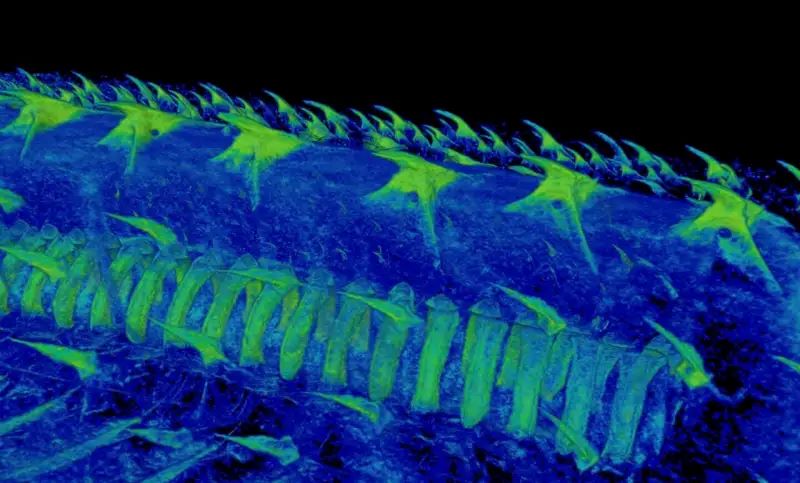Teeth began as tools for sensing, not feeding
Teeth, which are used for chewing and biting, may have originally evolved for feeling rather than feeding. New research from the University of Chicago reveals that dentin, the sensitive inner tissue of teeth, first appeared in the armored exoskeletons of ancient fish as a sensory structure, but not as a tool for processing food.
The study, published in the journal Nature, demonstrates that the dentin found in early vertebrate fossils likely played a role in helping these primitive creatures detect environmental conditions in the water around them. The findings shed new light on the evolution of vertebrate sensory systems and offer an explanation for how certain tooth-like structures predated the emergence of mouths as we know them.
More to read:
[video] Sharing tools sheds light on learning and evolution. The case of chimpanzees
The team focused on fossils from the Ordovician period, about 465 million years ago, discovering dentin within bony armor segments of ancient fish. These structures, known as odontodes, appear to have functioned like external sensors.
Researchers believe such adaptations were essential in the predatory, high-stakes marine environments of the time, where early animals needed to sense pressure and movement around them to survive.
Similarities between these ancient armor structures and sensory features in invertebrates, such as the sensilla in the shells of modern crabs and shrimp, suggest that both vertebrates and invertebrates independently evolved external sensory systems.
This parallel development points to a convergent evolutionary strategy — different species arriving at similar solutions to the same challenge.

CT scan image of tooth like dermal denticles on a catshark. These tooth-like structures are connected to the nervous system, suggesting they create sensation. Credit: University of Chicago
Early armored animals needed a way to interpret their surroundings despite being encased in protective plates, and sensory dentin provided just that, according to Neil Shubin, a Robert R. Bensley distinguished service professor of organismal biology and anatomy at the University of Chicago and senior author of the study.
Curiously, the lead researcher, Yara Haridy, a postdoctoral scholar in Shubin’s lab, began the project in pursuit of a different question: the identity of the earliest vertebrate in the fossil record. She collected hundreds of Cambrian-period fossil specimens from museums across the U.S. and conducted high-resolution CT scans at Argonne National Laboratory’s Advanced Photon Source.
One fossil, from a creature known as Anatolepis, initially seemed promising. It contained tubules beneath its armor that resembled vertebrate dentin, leading researchers to believe they might have discovered the oldest known tooth-like structure in vertebrate tissue. The excitement, however, was short-lived.
More to read:
Researchers discover jellyfish species that can fuse into one organism
Upon closer comparison with a known arthropod fossil from the Milwaukee Public Museum, the team realized the tubules more closely matched invertebrate sensilla than vertebrate dentin. This reclassified Anatolepis, previously thought to be a vertebrate, as an ancient invertebrate arthropod.
The team then confirmed that similar structures in another Ordovician species, Eriptychius, did indeed contain true dentin, marking it as a vertebrate and reinforcing the idea that early sensory armor structures predated oral teeth.
Haridy also examined modern analogs such as sharks, skates, and catfish—animals that still have denticle-covered skin. Her own aquarium-raised catfish provided examples of how denticles, like teeth, are connected to nerves. These living species echoed the same blueprint seen in ancient fish, underscoring the enduring role of dentin in environmental sensing.
More to read:
Chernobyl frogs adapted to high radiation exposure
The study contributes to an ongoing debate over the evolutionary origins of teeth. One hypothesis, the “inside-out” model, proposes that teeth developed internally and were later adapted for use in exoskeletons.
This new research supports the opposing “outside-in” model, suggesting that sensory armor structures came first, and the biological machinery that produced them was later repurposed to form teeth inside the mouth.







